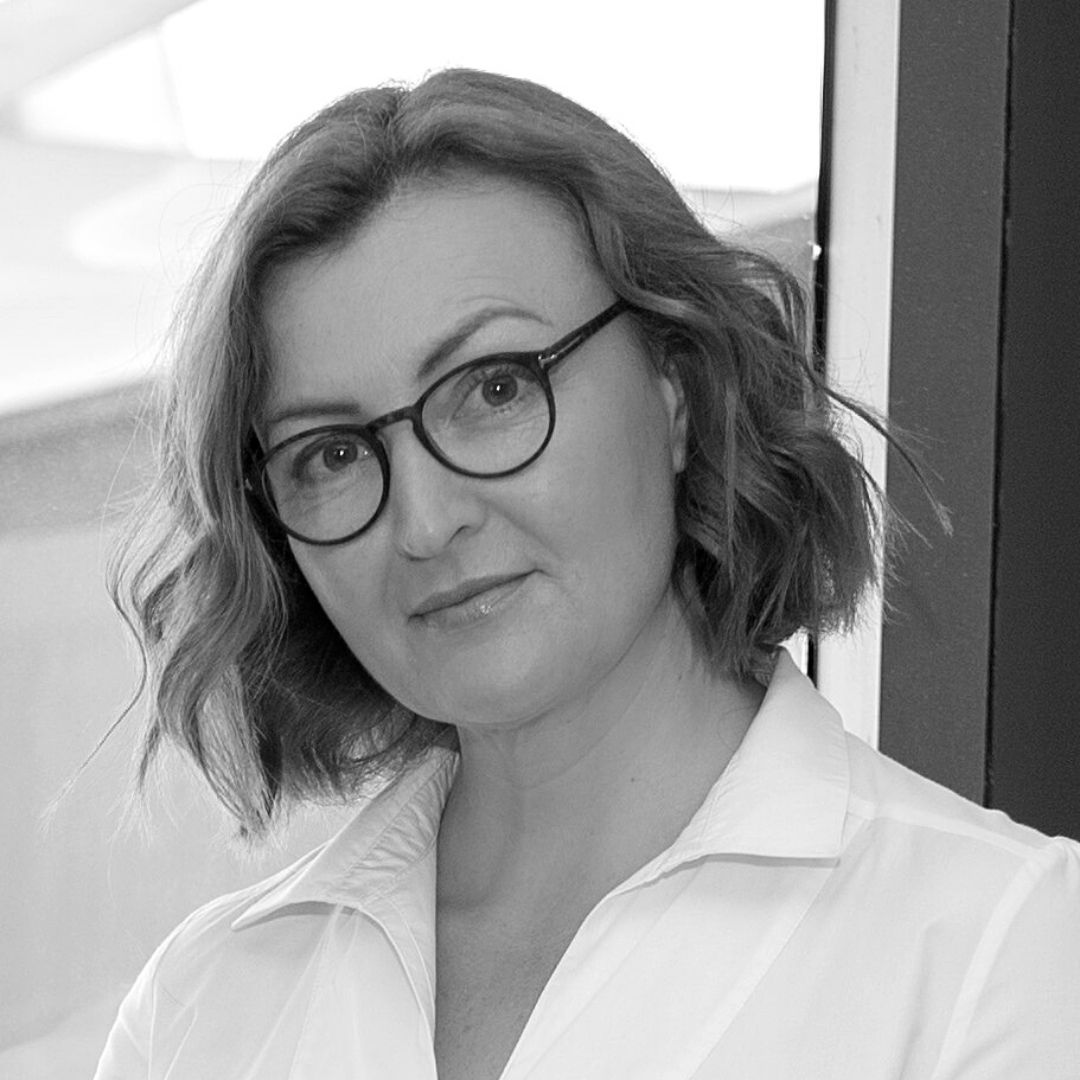
Find More Joy, Peace & Abundance with Feng Shui
Find More Joy, Peace & Abundance with Feng Shui
Many people think Feng Shui is simply a style of interior design, but it goes much deeper than that. Feng Shui is a traditional Chinese philosophy that calls for arranging living and workspaces in such a way to facilitate a good energy flow, in harmony with nature. In this episode, Feng Shui expert Simone Osswald shares tips on how to arrange your home and office space to allow for more joy, peace, and abundance.
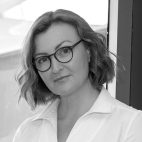
Simone Osswald
Founder of SO Feng Shui Design
Founder of SO Feng Shui Design, Simone Osswald, combines elements of Feng Shui, interior design, and wellness to create positive spaces that are in harmony with the people who use them. Regarded as the first Feng Shui Wellness Designer©, Simone is always learning and evolving; a passionate researcher and innovator who is committed to supporting her clients to lead more successful, healthier, and happier lives through environmental wellness. Simone has studied under renowned Feng Shui legends; Grand Master Tan Ghoon Yong and Master Goh Guan Leong with a client portfolio that spans across Europe, Asia, the Middle East, and Africa in the hospitality, commercial, and government sectors.
Transcript
Maria Marlowe: [00:00:34] Welcome back to the Happier and Healthier Podcast. It’s a little bittersweet to say that that is the last time I will utter that phrase because this is the last official episode of the Happier and Healthier Podcast. However, not to fear, I’m simply creating a new name for the podcast, so I’ll still be podcasting, still be bringing you amazing guests in the space of health and wellness just under a new name and with new artwork. So if you are subscribed to the show, be on the lookout for the new artwork and the new name in the next week. You don’t have to do anything, it’ll just switch over. And if you’re not subscribed, now is a great time to subscribe.
Maria Marlowe: [00:01:16] All right, let’s jump into today’s episode. Today we are talking about how to maximize peace, joy, and abundance with feng shui. To help us I have invited on Simone Osswald, who is a top feng shui design expert. She studied under some of the top feng shui legends, and she has a company that helps hotels all across the world implement these feng shui design principles and wellness principles into their hotels. So she’s done hotels in Europe and Asia, the Middle East, Africa, and is really very knowledgeable on this subject. And you may be thinking, how does interior design impact my emotions or my joy, my abundance? It doesn’t sound like it’s possible, but after you listen to this episode, you’ll see how our space makes us feel and how our space can indeed influence our emotions and more.
Maria Marlowe: [00:02:20] Simone, thanks so much for being here.
Simone Osswald: [00:02:22] Well, thank you so much for the invitation. I’m happy to be here. Very excited.
Maria Marlowe: [00:02:26] So let’s just start with the simplest question, which is what is feng shui?
Simone Osswald: [00:02:32] Yeah, a very good question, and it seems that feng shui is still a bubble of mystery, what it actually is and what it’s not. So Feng Shui put in very basic explanation is the study and the analysis of people within their environments. So that’s the easiest explanation to understand. Everything is energy. We’re surrounded by energy, ourselves – we are energy and feng shui tries to understand those energies, so we measure them and we interpret them with certain formulas and some formulas, even based on sacred geometry. So there are specific formulas how we can understand the energies within a space. So this is the authentic feng shui.
Maria Marlowe: [00:03:16] And I asked this question first because I think most people have heard of feng shui, if not everyone at this point. But in terms of what it actually is in my perspective, I’m like, Oh, it’s a way of arranging your furniture and arranging your home to, you know, like you said, to help with the energy flow. But I know it’s used to help with, for example, well, joy, peace, and abundance, which we’re talking about in the study. So you can actually use it to influence your life. So can you talk a little bit more about that, the benefit side of it?
Simone Osswald: [00:03:51] Yeah, I’m very grateful I have this question. And unfortunately, there’s a lot of misinformation out there, what is accessible to us, when you make research and Google, what is feng shui? And what you mostly see is interior design and placement of some Chinese lucky charms and whatnot. So this is a misunderstanding and the reason for this mystery, let’s say that people don’t know actually what feng shui is, is simply because there is no real literature of the authentic feng shui. And let me explain that quickly how that comes about because feng shui if you acknowledge that feng shui really has the power to enhance our health and also our wealth, which is the two main topics in feng shui, the two main goals.
Simone Osswald: [00:04:42] Of course, we have other goals, other life aspects, relationships and careers and so on. But if we acknowledge this power of this feng shui, we can understand why something like this is kept as a secret. And that’s actually how it happened. So feng shui is thousands of thousands of years ago, it was kind of discovered by Chinese geomantic scientists, which are those who study the earth, the energies around the Earth. And so they discovered the lifts, they studied the cycles of the cosmic energy, the constellations of the planets, and so on. And all this has an influence on the land.
Simone Osswald: [00:05:23] So we’re talking thousands of years ago when people still lived in harmony with nature, and so they figured out which season is the best for the crops to grow, which is the best for rivers? Where is the best riverbank where you can settle down and actually have a fruitful life? And so this power at that time was acknowledged by the emperors, the Chinese emperors. So these Feng Shui masters were actually held captive from the emperors because they knew they would secure their power and they were even and now listen to this. They were even sentenced to death if they would ever share this knowledge with the common people or with other emperors.
Simone Osswald: [00:06:08] So you can understand the secrecy of all this, and it only happened in the civil wars, all the change in the 20th century in China, when finally these feng shui masters could flee the country. And then they saw the opportunity to sell their knowledge to spread it around in other parts of the world because it was powerful and it did secure the emperor’s power. So they can understand that now the risk is if you spread something mouth to mouth that it gets a bit diluted and also you need to see it started in China. So the problem was that when common people heard about this power, they mixed it up with their rituals, their religion, their beliefs, and all their lucky charms. So that’s why this whole dilution came about. And even today, the knowledge of Feng Shui, the classic, authentic feng shui that really makes a difference in your life is even nowadays still transmitted from master to disciple.
Simone Osswald: [00:07:11] And I myself, I studied in Asia under big grandmasters and masters in their courses physically to understand and to interpret in a professional way, to understand the energies, how this is applicable to houses and to buildings and to all our environments. So there you see, there’s a lot of books out there which talk about interior design, but this is all the dilution of all this that has been really taught in a serious manner.
Maria Marlowe: [00:07:43] No, it’s quite interesting the history which I knew it came from China, but I didn’t know the whole history, how it was very secretive and only the emperors could have access to it.
Simone Osswald: [00:07:53] Yeah, it also makes sense, doesn’t it, when you hear the history of it and think, Oh okay, there’s something to it.
Maria Marlowe: [00:07:59] And I mean, it’s quite an interesting concept, and I think most people feel… Like you can feel when you go into a space, you can feel the energy or the vibe of it, right? There are certain places that have good energy, good vibe. You go in there and you’re like, I feel great. This is nice. Like, you’re relaxed, you’re calm, you feel good. And then there are other spaces that make you feel the opposite. So maybe a space that’s crowded or there’s a lot of stuff all over the place or just for whatever reason.
Maria Marlowe: [00:08:27] Sometimes it may not even be a specific thing, but sometimes you can go in and you feel like, oh, I don’t like this place or something’s weird or off about it. And I think kind of at its simplest right, that’s kind of what feng shui is addressing, right? It’s creating that good vibe and that good energy in whatever spaces you spend your time in.
Simone Osswald: [00:08:49] Absolutely, and you actually nailed this, because, yes, when you go in those spaces that you say they feel good, you actually cannot pinpoint why. And also in spaces that don’t feel good, you can’t pinpoint why it does and what is missing or what is too much. So Feng Shui addresses this with understanding the existing energies. Is it dark energy? Like more the Yin? The yin is the feminine energy. It’s one spectrum, and the opposite is the male energy, the yang energy, which is vibrant. So we need to understand which mood is in which room to understand how we can arrange this room to give it that purpose. Right?
Simone Osswald: [00:09:32] And so Feng Shui addresses this to a certain point to balance out the energies. Now what you were talking about, it feels right. Yes, Feng Shui does that to a certain point. And then we come to a very interesting topic, and this is my absolute passion that we talk about the concept that we’ve come up. We added to the Feng Shui also interior design principles, Western standard design principles, but also, more importantly, global wellness standards, which actually add the wellness aspect into that and we come up with a catalog. The concept is called, by the way, second nature, and it’s a concept that brings the ancient wisdom of Feng Shui together with the western world, with the interior design, but also globally, the wellness points.
Simone Osswald: [00:10:27] So this catalog of hundreds of points, we nailed it down to really understand, make a checklist what actually makes a space feel 100 percent the way we want it? And so this is measurable because it can sometimes be subjective to someone. It feels good for one person or for another. But that’s why we have created these lists of really universally applicable and replicable criteria for how to make a space feel good.
Maria Marlowe: [00:10:57] And it will be different for each room like you mentioned. So for example, if you want it to be calm and peaceful, but you don’t necessarily want your office to put you to sleep.
Simone Osswald: [00:11:06] No, not really.Yes, exactly. You need to create the space for its purpose. So what I encounter a lot is people think Feng Shui, oh, it’s all about calmness and relaxing and spa. It is not. It’s one aspect. The other aspect, it can be very vibrant and joyful and peaceful. If you have a hotel reception, for example, you don’t want to fall asleep in a reception. It’s vibrant. You come to a nice space or in an office. Yes, you want vibrancy, you want really bright light and to focus. And as you rightfully said in a bedroom, it’s kind of the opposite. You want to have it like a dark mood and calming, grounding. And this is exactly the point. Feng Shui can do both and more than that.
Maria Marlowe: [00:11:55] So let’s talk about some of these specific benefits or feelings that we want to feel. So let’s say someone wants to feel more joy. What are one or two things that they can do in their space that will help bring in that energy?
Simone Osswald: [00:12:10] So there’s a lot of, let’s say, tools to bring in a certain energy. First, we need to understand with the Feng Shui calculations what energy is in that space at all at first. It’s like before you fix yourself at the doctor, you first need to do an examination to understand what is actually there and how can we make that better? So this is why we do the physical examination, a physical assessment of a place to first see, okay, where is the space that you want to have this joyful experience? You know, maybe not in the bathroom, but maybe in the living room.
Simone Osswald: [00:12:49] So we see, we understand with the calculations what energy is present at the moment. Now it can be that there is some element that shows that this specific room has actually quite negative energy from a sort of environmental perspectives like you need to see what’s outside if there is, for example, a radiation tower that emits radiation or something. Or is there a construction site or is there a big river which would be positive? So we need to understand what is there and what is it not naturally prone to? Is it more a room that you should actually more use for a bedroom because it naturally has this energy? Or has it really an active energy by itself already? And then we look at how we can enhance that.
Simone Osswald: [00:13:34] And to do that, we look also into the five elements of Feng Shui, which is one of the tools which gives us an indication how we can enhance the existing energy. For example, if you want grounded energy you go with more earth energy. And there are different design elements how to incorporate earth energies. A joyful space is associated with the element of fire, so fire can be not just the color red, but for example if you don’t like the color red – obviously, the living room maybe not, but you can, for example, bring an animal inside, a pet. A pet is very lively or family pictures that makes it joyful. So there’s a lot of tools in the toolbox that we can use to make this space very joyful.
Maria Marlowe: [00:14:24] Yeah, I like that you brought up the fact of putting up family photos. So actually, in my in-law’s house, they have a whole gallery walls of family photos and my mother-in-law is always… We don’t have any pictures up. We have like a picture here or there from our wedding, and she’s always like, you need to do a gallery wall. You need to do a gallery wall with the whole family. And it was interesting because I did a little bit of reading about Feng Shui before our call, how simply having family photos around is one of the tools you might use too. Because your family is your support system and it will bring you joy and happiness, right, to see those happy moments.
Maria Marlowe: [00:15:04] So I thought that was interesting because again, from sort of my perspective, pre talking to you or pre actually looking into it, just from kind of pop culture, I just, like you said, to me, it was kind of like an interior design principle, you know. And I didn’t realize it was going so deep to really tap into the whole energy aspect of it.
Simone Osswald: [00:15:25] Yeah, absolutely. Absolutely true. And sometimes if we listen to the principles of Feng Shui, sometimes it’s even intuitive, as you just said, and this is the principle of nature as well. So intuitively, people make you feel lively. Your family, pictures of your family. It makes you feel joyful. And this is fire which is connected to the energy of joy and passion. So everything comes from nature, and nature comes from us at the end.
Maria Marlowe: [00:15:53] Okay, so if anyone wants to make their space more joyful, maybe get a pet.
Simone Osswald: [00:15:59] Maybe get a pet. Yes.
Maria Marlowe: [00:15:59] Maybe put some pictures of your family up. And now what if someone wants to feel more peaceful and zen? So perhaps in the bedroom, like I think you mentioned before using earth tone colors, what else? Adding plants? What else could they do?
Simone Osswald: [00:16:16] So before we go into enhancing a certain energy, the first step actually is to remove energy disruptors. So before we do something positive, like before you take vitamins, let’s first check your health and see what we first need to fix before vitamins can actually be effective. So one of our first steps is the examination of the radiation. So we work with very highly sophisticated tools that’s used in Germany, in building biology that measures radiation either from the outside, from Wi-Fi. So it’s radio frequencies that come from all wireless connections. And then the second part is the electromagnetic waves, which come from everything that’s electric and electronic, like the bedside tables, like the radio, light switches, lights and so on.
Simone Osswald: [00:17:11] So first, we do the examination of that because that can sometimes be very, very detrimental to your health. A lot of people have sleep trouble and they try everything. They take pills. They live healthy. They eat the right things, but still can’t sleep. And very often it is because of too much radiation. So we go there and check what radiation does the lamp have. A lot of lamps, even if they’re expensive or cheap, it doesn’t matter. It depends on the wiring. So we have a look at the wiring. We check with our devices what emission is actually coming out of this and how close is this to your head at night.
Maria Marlowe: [00:17:54] Yeah, I’m so glad you brought this up because you had actually mentioned it right before we started the interview with your headset and…
Simone Osswald: [00:18:00] With my headset, yes.
Maria Marlowe: [00:18:01] So, you know, this is actually a topic that has come up before on the podcast because I have a lot of doctors and health professionals on the show. And of course, EMF and radiation is not good for your health. And so a lot of functional medicine doctors will also recommend to limit your exposure to EMFs, like turn your Wi-Fi router off at night, for example. So this is quite interesting to hear it from your perspective as well, why it’s so important. And then really take a deeper like I would never even thought like my lamp could be causing issues.
Simone Osswald: [00:18:35] Yes, and it’s understandable because we have never been taught this. We have never known this and we simply don’t know. It’s not like we’re lazy to look into things. We simply don’t think about it because it’s everywhere. It’s in hotels, it’s in offices, and it’s just become a part of our life without even thinking. So once we remove those radiations, we can then start to enhance the energy. And sometimes it’s not even necessary because once we remove the radiation, like we have different shielding options or we simply switch off the light, the bedside lamp on the wall socket.
Simone Osswald: [00:19:16] So if you switch up the lamp, sometimes that doesn’t do anything, so you need to really switch it off on the wall, on the wall switch. And also charging cables, for example, is one of the highest radiations. And people don’t know that. And a lot of people, a lot of my clients, I see the charger cable on the bedside table and all these remote devices. So once we remove that, sometimes people say already they sleep so much better and since a long time, it’s the first good sleep they have. And so this is a very important topic.
Simone Osswald: [00:19:50] And then sometimes just minor tweaks will even improve this further. Like, for example, we go, especially with our second nature. Now this is less Feng Shui, more the second nature approach, the wellness approach. We take on board as well to use organic fragrances and organic is important because normal fragrances, they have very toxic ingredients so it can actually make you feel worse than what you think. So an essential oil or one of these diffusers with lavender, for example, chamomile, all these relaxing fragrances, even just half an ml before to go to bed that can enhance from an olfactory point of view.
Simone Osswald: [00:20:32] And also when you look at the furniture in a bedroom, so I see a lot of cool designed bedrooms, which are nice to look at, but they don’t fulfill the purpose of a restful sleep, which is, for example, white. White is a very popular color in bedrooms because it looks chic, it looks clean, the bed linen looks clean.
Simone Osswald: [00:20:56] The problem with white is it actually triggers the brain to be alert, so it doesn’t fulfill the purpose. So white linens, in hotels, yes, they look clean. And that’s what people connect with white. It’s clean. But I always recommend my clients to use a bit more hued tones like a little beige, even if it’s a bit off white, just not the really, really clean, bright white. Then you look also at the furniture, you look at the noises from coming outside. So we really look at every single detail. It’s like a recipe. You have so many ingredients that you put together on our checklist and the end result is really wow. Three 360 feel-good concept.
Maria Marlowe: [00:21:46] Yea, because I think most of us don’t put really much thought into designing any space and especially not the bedroom and for example, even me living in an apartment, the rooms are kind of small. You can only put so much furniture, so you don’t have options. I can only put my bed in one direction. There’s nowhere else it will go. So it’s kind of refreshing to see the amount of thought that really goes into, and the mindfulness about creating a space. It’s not just throwing things in there, however, they fit. It’s being really mindful and intentional. How do I want this room to make me feel? What am I going to do in this room and then optimizing everything in that room?
Simone Osswald: [00:22:26] And when you mentioned your bed only fits in one direction, so this is a topic related to the authentic Feng Shui. So every one of us is born with a certain energy, which is calculated based on your birth date, and every person has positive directions to sleep in and negative directions to sleep in. Now this can be a challenge when you say in apartments where normally designers have already or the builders already put the sockets in a certain way. So this is how you have to put your bed. And you know, if you’re lucky, you have two bedrooms you can choose from and one of them ideally has a different direction so we can choose which one actually makes you sleep better. But if you don’t have the choice, there are still a lot of other things that you can look at.
Maria Marlowe: [00:23:16] Right? Yeah, it sounds like from the colors to the materials, to the scent. All of these things also make an impact.
Simone Osswald: [00:23:24] Exactly.
Maria Marlowe: [00:23:25] Now what about abundance? Because this is the one that I think a lot of people, their ears will perk up. So how do we use Feng Shui to bring in more abundance?
Simone Osswald: [00:23:36] So also a very interesting topic, and this is very much requested more from, believe it or not, Asian clients. So for some reason, wealth is more of an interesting topic than the health aspect, but it actually goes hand in hand because everything in life starts with health. If you have a good sleep, that’s why the emphasis is also on bedrooms. If you have a good sleep, your whole day will unfold successfully. Imagine you didn’t sleep at night, you wake up in the morning and everything kind of is a bit, you know, it doesn’t go round everything.
Simone Osswald: [00:24:17] So when you have a good sleep, you have energy. You go out there, you have motivation. And this sets the fundamentals for being also successful. Now, if we go deeper into calculations, there are certain areas of the home, yes, they have energies for financial luck and we say luck because it means there is potential, depending on what we do with that space. It can actually activate financial potential, financial success. Now, this is something that has to be really assessed with a physical examination. There is no general rule, for example, the new age Feng Shui tells you there is a matrix. This matrix was is valid for all the houses, and in this corner is the wealth area.
Simone Osswald: [00:25:08] Now, this comes back to what we discussed before. This is a diluted, simplified system to get through the idea. But every house has the financial energies in a different area, and this is a combination of, let’s call it, cosmic constellations of energy, the accumulation of certain energies that creates that financial success. And it has nothing to do with, for example, Law of Attraction, which certainly works. I do myself work with Law of Attraction, but it’s not Feng Shui.
Simone Osswald: [00:25:44] Feng Shui is not Law of Attraction. It works with energy, with science, actually. So and once we find out if there are financial luck energies in the house, we see how we can activate them, how we can enhance them. And yes, and it works. It is a system that has been proved and has so many proofs of suddenly people saying, Oh my God, I got this new job, or, Oh my God, I just got a check. I was waiting for this for two years and I finally got it. You know, there are energy blockages that we remove and certain potential that we activate.
Maria Marlowe: [00:26:22] Is there any one particular client story, whether it’s personal, like a personal or residential project you worked on, or maybe even, I know you do a lot of hotels as well all over the world? Is there any testimonial that really stands out where they had some amazing thing happen after?
Simone Osswald: [00:26:44] Actually, believe it or not, It’s myself. I experienced it by myself. So it’s a funny story. When we moved into this villa, we’re now, of course, I brought my wind chime with me, which is one of the tools that activate energy simply because it may create sound vibrations. And the vibrations create frequencies, and the frequencies are aligned with certain frequencies that you want to attract. So there we come more into quantum physics as well. So we try always to make Feng Shui understand in a scientific way so people get more of a connection to it and don’t see it as a, you know, as purely metaphysics. Mystical.
Simone Osswald: [00:27:31] So and it was funny. So we brought it in a box and we hang it. And so my husband, he just hung it somewhere outside in a tree, and I wasn’t aware of this, wasn’t looking. And so I was waiting at that time, exactly. That’s what I said before. I was waiting for a contract to come through, and it was quite an interesting project. And I was waiting and waiting and waiting, and I thought, well, maybe it’s not going to happen. And so one day I walked out in the garden behind the house and I said, What is this doing here? Oh, I just hung it there. It sounds nice, you know? And I said, Oh my god, no! This actually, I forgot to hang it. It belongs there because that’s where our financial energies are. And I put it up, two days later, I got the contract signed, believe it or not. And I tell this story all the time because it just shows myself it actually works.
Maria Marlowe: [00:28:24] I’ll need another wind chime. Let’s put that in my house.
Simone Osswald: [00:28:28] Yes. Well, be careful, because Feng Shui Bagua can be very dangerous. It can also activate energies you don’t want. I had a client who had a wind chime, for example, in an area where it has the potential to create some water damages. Any kind of related water damages. And indeed, they had flooding in the garden because of that. And when I told her, you know, Have you actually done anything to the garden? Anything? No, nothing, and I saw this wind chime. And I said, when did you hang that up? Oh, that was last week only. So I said, exactly in this because I calculated the energy already. I did my calculations and everything and said, this is actually the worst place you could have put it because this is causing water damage. So it’s all related. There is proof after proof with every consultation. There’s another proof that it actually works.
Maria Marlowe: [00:29:27] Yeah. So let’s talk about the science aspect a little bit because I know that is something that you really emphasize in your own practice. A lot of people, I would imagine, assume that Feng Shui is this sort of mystical, woo-woo type of thing. Saying no, like we’re actually doing real calculations. There’s geometry involved, there are certain principles and, you know, formulas involved. So can you talk a little bit to the science aspect of it?
Simone Osswald: [00:29:59] So you’re absolutely right. We’re trying to distinguish ourselves with getting our message across that Feng Shui is not intuition, it’s science. Everything comes from science. The study of the environment. And how can we make this understandable to even the most Western-logic thinking person to get them connected to what we do. And we start by talking about energy. Energy can be measured and everything is energy. We are energy. Quantum physics tells us everything is energy. Einstein says everything comes from energy, from atoms, how they interact, how they attract other atoms.
Simone Osswald: [00:30:50] So we have a lot of done a lot of research on all these thought leaders Einstein, Nikola Tesla, who was a quantum physicist who created the free energy in the world. So there is actually free energy available to us, and we actually wouldn’t need electric energy from the sockets. And to make this understand, energy is freely available to us and it’s out there and we just need to understand it. We need to understand it, interpret these energies. We have certain vibrations. Bio-resonance medicine works on that. We have certain frequencies in our body. Everybody has a certain frequency and everything around us has frequencies. So we need to align our personal energy or more the other way around. We need to align our environment to be in tune with our personal frequency.
Simone Osswald: [00:31:45] And this is part of it… It’s basically Feng Shui. Only in Feng Shui you don’t give them numbers like meters per volt while in physics you do that. So actually, I have devices that can measure your personal frequency, the personal electricity you have in your body. And so this is how we connect this mystery. Let’s say we bring this to the modern world. We’re actually proving, look, you have this frequency at the moment, and this is what you need to surround yourself with to align your body, to align yourself with your environment.
Maria Marlowe: [00:32:23] And could you, let’s just say hypothetically, someone’s at a lower frequency or maybe not in the best place? Could you then use your environment to sort of elevate that instead of just kind of keeping you where you are?
Simone Osswald: [00:32:39] Absolutely. So we can certainly energize the environment, and this is what it’s all about, to give you the energy that you need. If you say you I need more motivation. I need more of this joyful energy. Then again, we will look at what’s the energy at the moment and we enhance that and we bring in things that are joyful, that higher the frequencies. And then you can even go further into music, for example. Music has a certain frequency. Put up music that aligns with you, that that you are attracted to because our favorite songs that we like to listen is exactly the frequency we need. Sometimes we don’t like certain types of music because it’s just not our frequency. It’s not good for us. You see, so this is how we figure this out.
Maria Marlowe: [00:33:29] And what role do plants, for example, or natural materials, how important are those?
Simone Osswald: [00:33:36] That’s also a very good topic. Nature. Plants, of course, are a beautiful piece of nature that we can bring into our homes, and Feng Shui is all about nature. Because nature has the best energy, it has the most healing energies, the most healthy energies. Whenever we go out in nature, there’s something that just makes us feel good. We’re refreshed, we’re just aligned and grounded. So bringing plants into the home is bringing a little bit of nature of that vibration into our homes, a little bit of healing energy. A lot of houses don’t have plants and that they feel, a bit cold or a bit lost. Something is missing in there because there is no natural vibration, no natural frequencies, and it makes us feel a bit lost. So bringing in those plants and I always am an advocate for lots of plants in the house, a lot of greens, low maintenance.
Maria Marlowe: [00:34:33] There’s no such thing as too many plants, right?
Simone Osswald: [00:34:34] No, not really. Except in the bedroom. In the bedroom, there shouldn’t be any plans anyway. But yeah, this is bringing a piece of nature, bringing a little bit of peace into your home and into your life.
Maria Marlowe: [00:34:45] And what about there is a movement now towards more natural furniture, getting away from the glues and all these chemicals, right? There are so many different chemicals in regular furniture. So is that something that also comes into the equation, being mindful about where you’re sourcing the things in your place?
Simone Osswald: [00:35:09] Absolutely, absolutely. And that’s a very important topic as well. What materials we’re surrounding us with? It’s very important, not just the type of furniture and carpets and curtains and even bed sheets. If you have this polyester material or these, you know, this plywood, they’re dead energy or negative energy. They don’t have natural vibration, so it doesn’t support you in your energy. And the more natural materials you use, the more natural energy you have and more of this grounding energy you feel. It’s one of the aspects that makes you just feel, you know, that that space like, I just feel good. I don’t know why, but it’s one of these aspects and a lot of designs, as you rightly said, go away from this thing because they realize that this is an important element of homes. The building materials, the furniture, the glues. As you said, everything that’s built-in that you maybe don’t see.
Maria Marlowe: [00:36:12] It all has an impact.
Simone Osswald: [00:36:12] Your body can feel it. Exactly.
Maria Marlowe: [00:36:14] So what are your three top tips to instantly increase the energy flow in a home?
Simone Osswald: [00:36:24] If we go to the general rules of Feng Shui, not the tailored. So if you don’t want to change anything in your life, you don’t have issues in your life, then we can generally improve a little bit the energy flow at home. So one of the most important things is, first of all, get rid of your clutter. Decluttering is a big subject, and you might also know the movement with Marie Kondo. Spark Joy. You can make this in a really fun way, and the reason behind it is because it’s actually more than one reason. The reason is, first of all, you simplify your life. Really.
Simone Osswald: [00:37:02] The less things you have, the more you can focus on important things in your life. From an energy perspective, the less you have standing around or laying around, the smoother the energy can go through your home. And it’s just a bit more of a, you know, of a satisfying feel at home. And yeah, it can be fun. I do that on a regular basis. Going through drawers, wardrobes, you know where you’re hiding things, just either keep them, sell them or donate them, and it actually makes you feel good already. So there’s a lot of reasons why to declutter.
Maria Marlowe: [00:37:41] Yeah, it feels so good after organizing and getting rid of the stuff you don’t need. It’s like a whole weight is lifted off of you.
Simone Osswald: [00:37:48] Absolutely. Another point that you can look at is to and this is also a very popular method, I would say, to hide things behind the door so nobody can see them. And it’s actually in Feng Shui it’s very important that you have the doors, that the doors can open freely without any obstruction behind it. So make sure every door can open fully and can let all the energy go through it smoothly without any blockages. That’s also an important topic.
Simone Osswald: [00:38:18] And maybe I would say the last point is to remove energy disruptors, to make sure you don’t have too many edgy things in the house, corners, pointy corners, edges, or glass tables with sharp edges, which brings a bit of a disruptive energy into the space. It’s also subconsciously a bit of a hazard. You don’t think about it, but your subconscious does, so it does make you feel a bit, you know. The same applies, for example, to anything hanging above your bed on the headboard side. So, yeah, I would remove anything that’s hanging up there because of exactly that feel.
Maria Marlowe: [00:38:56] Yeah, that would be fun if something fell.
Simone Osswald: [00:38:59] Exactly.
Maria Marlowe: [00:39:01] Yeah, no that’s interesting. It’s interesting what you say about the shapes, right? Like I’m thinking of my rectangular coffee table. I know. Yeah, and I feel in a lot of modern spaces, it’s very angular, right? It’s rectangular rugs and even rectangular furniture now, right? They have that very boxy shape.
Simone Osswald: [00:39:24] Yeah. But yeah, but it’s not a bad thing because if you want to create such an edgy atmosphere, it’s fine. It works. But you know, when you ask, how do you create a harmonious feel at home? How can you improve the home? It’s more about bringing really a balance in there. It doesn’t all have to be around, but the reasoning behind is if you look into nature, there is no straight shape. There’s not a single straight shape in nature, there is no rectangular. There are no squares. Everything has curves, corners, is round, oval shape. Because it’s a natural. It feels naturally good if you look at something a bit more roundish and you feel more at ease.
Simone Osswald: [00:40:06] So of course, you don’t have to have everything like nature if you want to be a bit more dynamic. Of course, rectangular shapes are fine. Just balance it out at the home. Have a bit of both just to harmonize a little bit. If you have a very geometric apartment and you have a geometric table, yes, it might feel a little bit, maybe if something is missing. And that’s one of the points when you say sometimes you go somewhere and everything is just right. So maybe in that spaces, you will see the balance of the yin and yang of the opposites.
Maria Marlowe: [00:40:41] And it’s interesting that you point out that our eye likes to see the round shapes because I do a lot of food photography and with the plates, the perfectly round ones, I don’t like them as much. I always like the organic plates that are a little bit, that are hand done and ceramic and stuff. So they’re a little bit oblong and they’re just a little bit not perfect. And those are always the ones that look the best in the photos that I personally like to eat off of. So it’s quite interesting.
Simone Osswald: [00:41:08] They are more naturally pleasing.
Maria Marlowe: [00:41:10] Yeah. And any other tips for bringing these ancient principles into the modern world? Like one interesting question, which I’m curious about, everything’s digital now. So how do we bring these principles, for example, even into the digital space? Could we actually a website, for example. How do we get to the present day?
Simone Osswald: [00:41:34] I haven’t Feng Shui-d my website because although my computer, I tried to put my computer as far as away from me as I can because of the radiation. Yeah, I think we need to understand what is real, authentic Feng Shui that makes a difference in your life and what is kind of what we call the new age Feng Shui. They even like Feng Shui, as you say, a website which I think goes too far away from the authentic and real Feng Shui. But how can you bring this into your own life is just to have sometimes a bit more a look of technology, which we all need our phones. We all need our smart devices, we all need our computers. But maybe it should have a look at these radiations can really be tiring to us. We can get headaches of those we can. Modern technology has its advantages, of course, without doubt, but we just need to see how smart we can integrate that in our lifestyle.
Simone Osswald: [00:42:34] So one topic we mentioned maybe don’t use them in the bedroom. And secondly, there are so many shielding products like, for example, the headphones I’m wearing now, they are EMF shielded. So they have just a plastic tube. So the cord, the wires don’t even touch my head. It’s a tube that transmits via Echo and I hear you perfectly. I can hear everything perfectly in very good sound quality, but it reduces massively the radiation on my head. Or try not to hold your phone directly on your ear. And even in the smartphone instructions, it’s even written and nobody knows that. Don’t hold the phone directly on your ear because it’s damaging to your health. Nobody knows that.
Maria Marlowe: [00:43:17] I know nobody reads the instructions, but it’s actually in my little box that comes with the phone.
Simone Osswald: [00:43:23] Exactly. And even on phones. So just don’t keep on your desk every day what you don’t need. Switch it off. The printer. My printer is always switched off next to me. Once I need it, I turn it on because it can reduce massively. I had a client, every day, he was complaining about headaches, about he is feeling dizzy and he’s every day he’s exhausted since he works at home. So we had to look into that and I was impressed by the super stylish desk, big office space in his home, and transformed a bedroom into an office space. But it’s beautifully done from a design perspective.
Simone Osswald: [00:44:00] But then you look at it, I saw immediately that it was a topic of radiation because there was very sophisticated, stylish, expensive lamps, floor lamps and a table lamp and a printer on the table. And there is this device and the charge of the wireless charger for phones. And like 20 different devices on that desk. So we managed to reduce the radiation massively from an index of three hundred and thirty. So this is just an index. We’ve reduced that to just under 15 and 10 is kind of recommended for a healthy workspace. And believe it or not, he called me two days later and said, wow, that’s amazing. My headache is gone. After two days, it’s just gone. He said, I feel energized. At night I want to continue working on that place because I love it so you can see how that actually is. Of course, he’s still using all of the devices, but just in a smarter way.
Maria Marlowe: [00:45:01] Yeah. That’s a great tip to carry forward. So one last question. It could be related to Feng Shui or just really anything else. But if you can leave our listeners with one tip to live a happier and healthier life, what would that be?
Simone Osswald: [00:45:17] I would say, accept your daily moods. Don’t force yourself to be happy. It’s the balance of life, the yin and yang of life. In order to be happy. You also need to be unhappy, and it’s just natural. We have this peer pressure to be happy all the time, but it’s not natural. That’s a big message I can give out there. When you’re not in a good mood. Enjoy. Enjoy being miserable for one day because the next day is going to be fantastic.
Maria Marlowe: [00:45:43] Yes, I love that. The yin and the yang. You need the dark to enjoy the light.
Simone Osswald: [00:45:50] Absolutely, absolutely.
Maria Marlowe: [00:45:52] Well, thank you so much, Simone. So where can people find more about you and what you do?
Simone Osswald: [00:45:58] Most of the information is on our website. You can see the projects we have done, the services we offer and we’re also on Instagram and on LinkedIn. And of course, you can call us any time or send an email. We’re here.
Maria Marlowe: [00:46:11] Wonderful. I’ll put her link in the show notes, and you can also find it at www.so-fengshui.com.
Simone Osswald: [00:46:21] Yeah, and the SO Feng Shui is actually my initials that often doesn’t come across.
Maria Marlowe: [00:46:26] Oh, okay. Yeah, I just thought it was…
Simone Osswald: [00:46:28] It’s just so Feng Shui, yea.
Maria Marlowe: [00:46:31] Makes sense now. Well, thank you so much.
Simone Osswald: [00:46:34] Well, thank you, Maria. It was really fun. Thank you so much.
Clearer Skin in Just 3 Days

Plus, you’ll receive The Glow Up Guide right away, a delicious 3-day meal plan to reduce redness and bumps, fast.





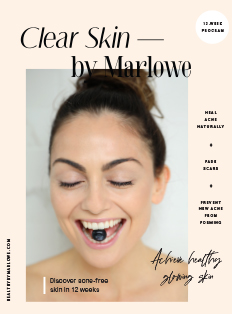

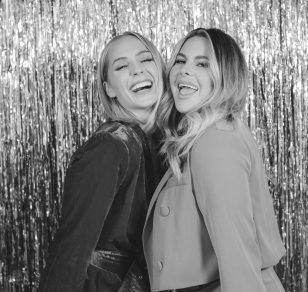
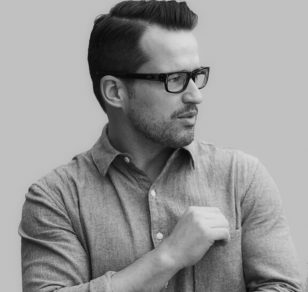




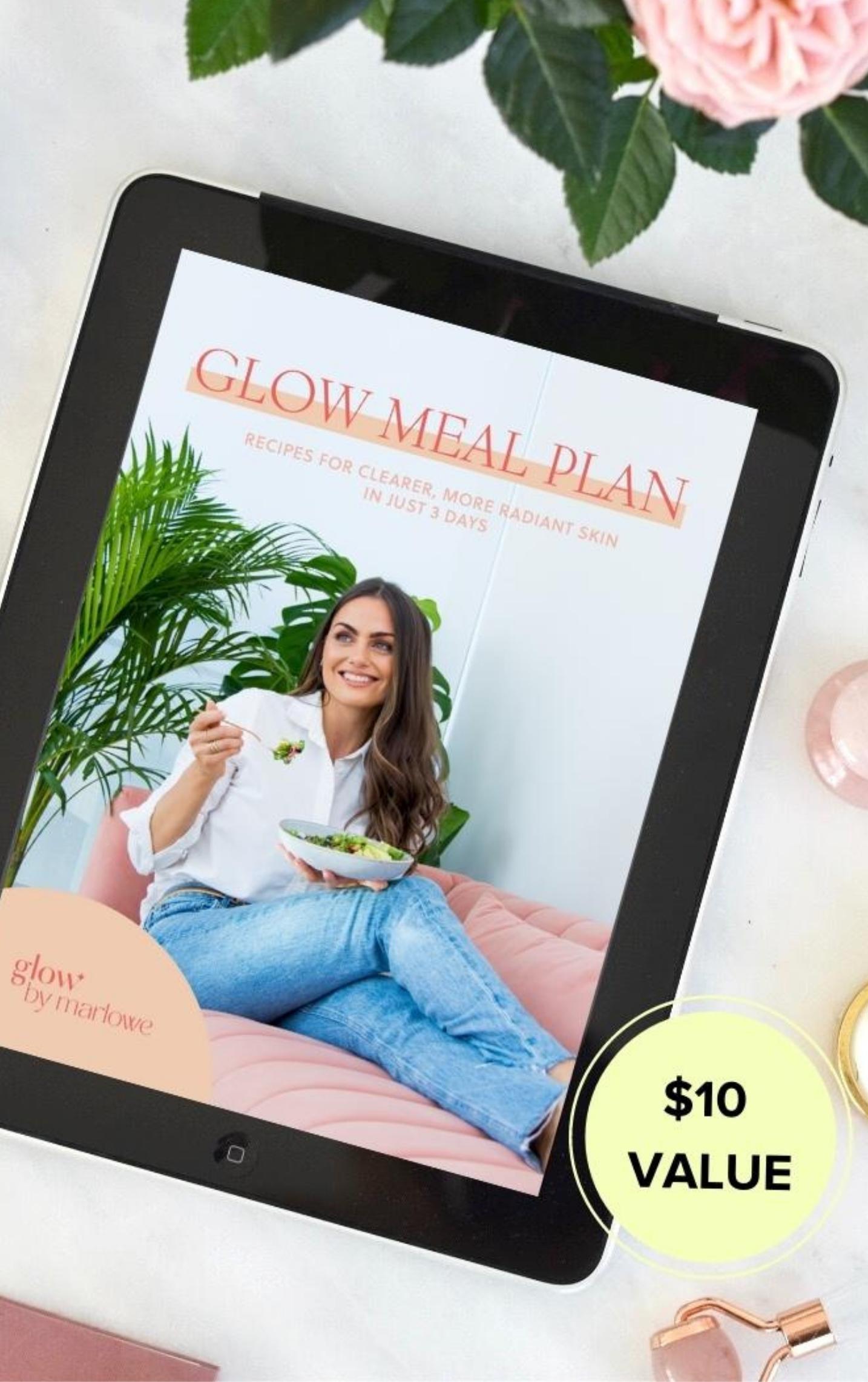
No Comments